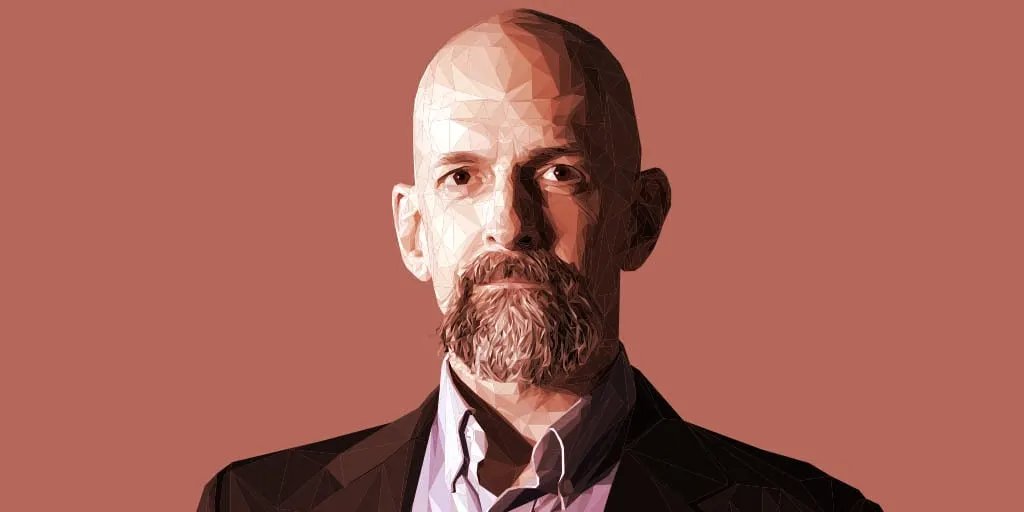Snow Crash—one of Web3’s most formative texts—predicted a lot, but it didn’t depict the climate of speculation that comes with NFTs today. No character in Neal Stephenson’s novel is shown flipping avatars for a profit like an NFT trader on marketplaces OpenSea or Blur might.
Stephenson wasn’t necessarily wrong, however.
On the latest episode of Decrypt's gm podcast, Stephen said that he sees an eventual shift away from the pure financialization of digital assets—a fundamental change that is key to establishing a flourishing version of the metaverse, where people ascribe value to digital assets beyond what they could be sold for.
“I'm hoping that we can kind of move away from this sort of single-minded effort to financialize everything and start trying to develop a more diverse economy, that by virtue of that, would be a more stable economy,” he said.
Neal Stephenson’s 1992 sci-fi novel pioneered the term “metaverse,” depicting it as a 3D, virtual realm in which countless people engage with and own items. In the novel, the metaverse is also a popular social scene, imbued with status symbols of consumer life—young people frequent the “computer-games section of the local Walmart” to purchase generic, starter avatars like affordable pairs of sneakers.
While no one is buying NFTs at WalMart just yet, multiple elements of the novel mirror aspects of today’s digital assets ecosystem in terms of both ownership and identity. In a similar way to how some NFTs are designed as profile pictures and used to convey aspects of one’s digital presence online, virtual avatars can be rented, owned, or coded from scratch in Stephenson’s depiction of the metaverse.
But a lack of sentimental meaning creates conditions under which entire NFT collections can be sold in the blink of an eye, he says, contributing to the volatility of digital asset prices. He drew a parallel between digital assets and “Tulip Mania,” a historic, speculative bubble that took place during the 17th century in Holland.
“People are willing to dump whatever they've gotten onto the market at the slightest sign that the market might be going down,” he said. “There's no sentimental value that would give you the slightest hesitation to sell them off if you thought they were going to lose their value.”
Stephenson said owners of digital assets should be given a role in shaping the digital assets they own in order to create that sentimental value and stem speculation, arguing that a personal connection would bring balance to people’s incentives to gain a profit.
“The way that we get a stable economy in the metaverse is by creating opportunities for people to build unique pieces of UGC,” Stephenson said, referring to user-generated content. “They might still one day go out and try to sell them, but probably not.”
As an example, Stephenson referenced a base he built in collaboration with his friends in the survival game Valheim. Even if the structure could be sold, he said the experience of creating and living in it would likely lead him and his friends not to do so.
“What happens when we explore virtual worlds and build things, is that we're creating that kind of scarcity,” he said.
Essentially, avenues that allow people to develop deeper connections with their digital assets would make them less like pure investments and more like personal items. It’s the same sort of value that can become ascribed to an item that is essentially worthless, Stephenson said, such as a 30-year-old paperback book with signs of wear and tear.
“It's got all these intangible connections that are more valuable to me than its cash value,” he said. “I remember buying it; I remember reading it; I've dog-eared the pages; I loaned it out to my friend, and he gave it back to me.”
And it’s those personal experiences that lead the book to feel truly unique, Stephenson said, even if it was identical to another copy when purchased.
“On one level, it is not scarce at all because there [are] many like it,” he said. “But on another level, it's priceless and extremely scarce because it's mine, and it's the only one of its kind.”
Listen to the full episode and subscribe to the gm podcast.

